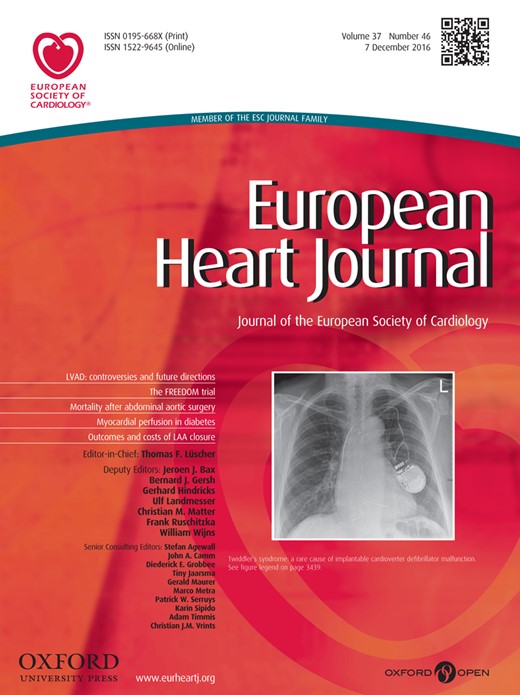
Cover image

Twiddler's syndrome: a rare cause of implantable cardioverter defibrillator malfunction
Robin Anthony PatrickWeir1*, C. Aengus Murphy2, Brian O’Rourke1, and Colin J. Petrie2
1Department of Cardiology, Hairmyres Hospital, Eaglesham Road, Glasgow G75 8RG, UK; and 2Department of Cardiology, Monklands Hospital, Airdrie, UK
Corresponding author. Tel: +44 1355 585 000, Fax: +44 141 211 1791, Email: [email protected]
A 63-year-old female received an implantable cardioverter defibrillator having been resuscitated from an out-of-hospital (ventricular fibrillation) cardiac arrest. She had pre-existent diagnoses of left ventricular dysfunction (ejection fraction 15%) and aortic valve and root replacement surgery; coronary angiography revealed modest, non-flow-limiting coronary artery disease only. She sustained significant hypoxic brain injury which improved during her admission to the extent that she was able to provide written, informed consent prior to device implantation. A St Jude Durata dual-coil active fixation ventricular lead was implanted via the left subclavian vein, attached to a St Jude Ellipse VR pulse generator buried in a pre-pectoral pocket (chest X-ray—Panel A).
At 4-week review, it was noted that the pacing threshold on the ventricular lead had risen from 0.4 V at implantation to 3.0 V. A repeat chest X-ray revealed rotation and downwards displacement of the generator together with marked twisting and torsion of the lead resulting in displacement of the tip of the ventricular lead hence the increase in threshold, consistent with the phenomenon known as Twiddler's syndrome (Panel B).
Twiddler's syndrome is caused by rotational manipulation of the position of the pulse generator by the patient. It is most commonly seen in the elderly in the setting of dementia although has been recognized in patients without cerebral dysfunction during sleep, and in a variety of psychiatric disorders. In this case, the patient's hypoxic brain injury was undoubtedly relevant; such patients have a high risk of recurrent twiddling if revision of the system is performed.
C.M., R.W., B.O. acquired the data. R.W. and C.P. conceived and designed the research. R.W. and C.P. drafted the manuscript. C.M. and B.O. made critical revision of the manuscript for key intellectual content.


